
Daniel Paul Charles was a French musician, musicologist and philosopher. He was born on 27 November 1935 in Oran (Algeria) and died on 21 August 2008 in Antibes (France).

Daniel Paul Charles was a French musician, musicologist and philosopher. He was born on 27 November 1935 in Oran (Algeria) and died on 21 August 2008 in Antibes (France).
He was a student of Olivier Messiaen at the Paris Conservatory of Music (First Prize, 1956), he received the aggregation in philosophy in 1959 and a PhD under the direction of Mikel Dufrenne in 1977.
After leading (late 1968) the Commission charged with establishing the status of professorship of music at the French Ministry of Education, he founded and lead for twenty years (1969–1989) the Department of Music of University of Paris VIII (Vincennes, and St. Denis). He was also responsible, from 1970 to 1980, for the teaching of general aesthetics at the University of Paris IV (Sorbonne). He decided to end his career by teaching philosophy at the University of Nice Sophia-Antipolis (1989–1999).
When he graduated from the Paris Conservatory of Music in 1956, he participated in the GRM under the leadership of Pierre Schaeffer, and proposed to set into electronic music Stéphane Mallarmé's "Coup de dés" in Darmstadt, a project which caught the attention of Karlheinz Stockhausen. But his lack of enthusiasm toward the "solfège des bruits" of Schaeffer led him to focus instead on John Cage, whom he met in 1958. He contributed then to present Cage's music and philosophy in France: Pour les oiseaux (co-signed with Cage), published first in French (Paris, Belfond, 1976) became a classic book. It was later published in English: For the Birds.
Daniel Charles has been invited by many universities to lecture (usually across the Atlantic, but also including Japan and the Philippines), and has published many articles and several books, five of which have been translated into German, and two into Japanese.
6 special issues of Revue d'Esthétique (from 1968 to 1998), among them: "John Cage" Number 13-14-15 (1989) (Toulouse, Privat / Paris, J.-M. Place).
More than 200 articles published in several magazines (Revue musicale, Analyse musicale, VH 101, Traverses, Corps écrit, Exercices de la patience, Le Temps de la réflexion, Etc. Montréal, Parachute, Discourse, The Musical Quarterly, The World and I, Alpha-beta, Il Verri, Synteesi, Musik-Konzepte, etc.), in collective books, and several encyclopedias, prefaces, LPs and CDs booklets, etc.
Musique concrète is a type of music composition that utilizes recorded sounds as raw material. Sounds are often modified through the application of audio signal processing and tape music techniques, and may be assembled into a form of montage. It can feature sounds derived from recordings of musical instruments, the human voice, and the natural environment as well as those created using synthesizers and computer-based digital signal processing. Compositions in this idiom are not restricted to the normal musical rules of melody, harmony, rhythm, metre, and so on. The technique exploits acousmatic sound, such that sound identities can often be intentionally obscured or appear unconnected to their source cause.
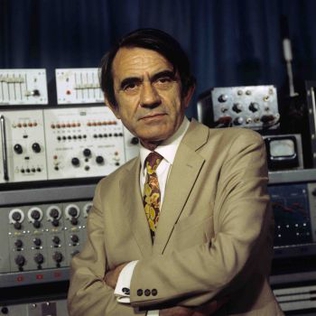
Pierre Henri Marie Schaeffer was a French composer, writer, broadcaster, engineer, musicologist, acoustician and founder of Groupe de Recherche de Musique Concrète (GRMC). His innovative work in both the sciences—particularly communications and acoustics—and the various arts of music, literature and radio presentation after the end of World War II, as well as his anti-nuclear activism and cultural criticism garnered him widespread recognition in his lifetime.

Luc Ferrari was a French composer of Italian heritage and a pioneer in musique concrète and electroacoustic music. He was a founding member of RTF's Groupe de Recherches Musicales (GRMC), working alongside composers such as Pierre Schaeffer and Pierre Henry.
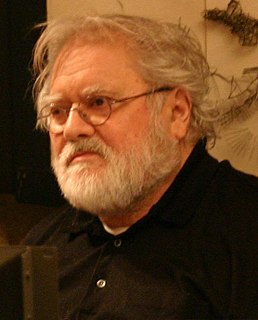
Pierre Georges Albert François Henry was a French composer and pioneer of musique concrète.
Francis Dhomont is a French composer of electroacoustic / acousmatic music.
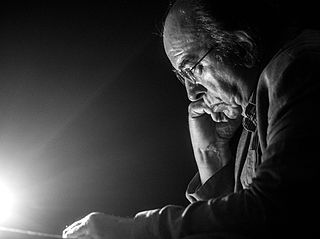
Jean-Claude Éloy is a French composer of instrumental, vocal and electroacoustic music.
Michel Paul Philippot was a French composer, mathematician, acoustician, musicologist, aesthetician, broadcaster, and educator.
François Bayle is a composer of Electronic Music, Musique concrète. He coined the term Acousmatic Music.

Stéphane de Gérando, is a French composer, conductor, multimedia artist, and researcher.
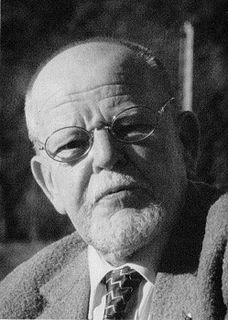
Claude Ballif was a French composer, writer, and pedagogue. He worked at a number of institutions throughout more than 40 years of teaching, one of which he had attended as a student. Among his pupils were Raynald Arseneault, Nicolas Bacri, Gérard Buquet, Joseph-François Kremer, Philippe Manoury, Serge Provost, Mehmet Okonsar, Simon Bertrand, Alexandre Desplat, and Claude Abromont. He was described as a French modernist and as "the product of the exciting and turbulent post World War II years of the Western avant-garde" alongside composers Pierre Boulez and Karlheinz Stockhausen.
Experimental music is a general label for any music or music genre that pushes existing boundaries and genre definitions. Experimental compositional practice is defined broadly by exploratory sensibilities radically opposed to, and questioning of, institutionalized compositional, performing, and aesthetic conventions in music. Elements of experimental music include indeterminate music, in which the composer introduces the elements of chance or unpredictability with regard to either the composition or its performance. Artists may also approach a hybrid of disparate styles or incorporate unorthodox and unique elements.
The Studio d'Essai, later Club d'Essai, was founded in 1942 by Pierre Schaeffer, played a role in the activities of the French resistance during World War II, and later became a center of musical activity.
Frédéric Jacques Temple was a French poet and writer. His work includes poems, novels, travel stories and essays.
Marcel Frémiot was a French composer and musicologist.
Makis Solomos is a Franco-Greek musicologist specialising in contemporary music and particularly in the work of Iannis Xenakis. He is also one the specialists of Adorno's thought. His work focuses on the issue of sound ecology and decay. He has published articles and books and participates in meetings and symposia. In 2005, he also participated in the creation of the magazine "Filigranes" which aims to broaden the field of musicology.
Antoine Goléa was a French musicologist of Romanian origin. He was one of the founding members of the Académie Charles-Cros.
Valérie SoudèresnéeBriggs, also known in her early days as Valerie Hamilton, was a French pianist, composer, and pedagogue.

Alexis Galpérine is a French classical violinist.
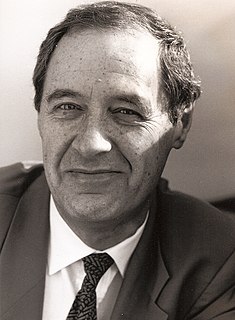
Claude Samuel was a French music critic and radio personality.
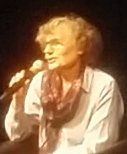
Cécile Wajsbrot is a French-Jewish writer, novelist, essayist, translator and journalist. Wajsbrot studied comparative literature in Paris and then worked as a French teacher and radio editor. She has translated books from English and German into French, e.g. by Virginia Woolf, Suzan Wicks, Charles Olson, Gert Ledig and Wolfgang Büscher.